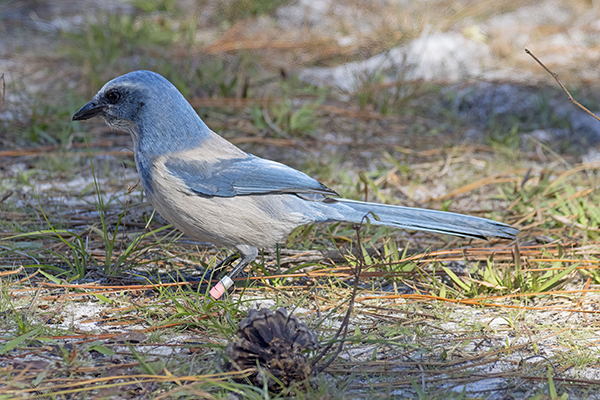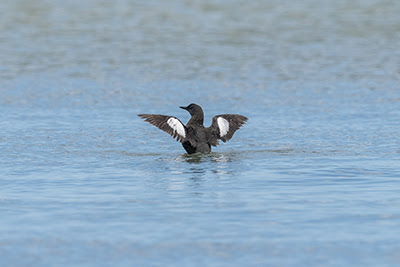A mixed year with some superb birds seen and some memorable trips. I managed to add 3 species to my local patch and house list in 2024. All of them wildfowl - an indication of the wet weather we've experienced that affected so many of our small passerines during the breeding season. Once again the pond opposite our house was the focus of attention with a memorable one afternoon Green-winged Teal proving to be the highlight. Other new birds were a juvenile Garganey that arrived with the first Teal of the Autumn and numerous sightings of Mandarin. Starting in the spring with a single male on the flooded part of the field and culminating in 9 juveniles that revisited on several occasions.
 |
| Green-winged Teal |
My Cheshire list increased by one with the superb Hudsonian Godwit found by Colin Wells at Burton Mere Wetlands RSPB. See here for details of that bird.
August saw me, Chris, Steve and Al making my 1st Scilly's pelagics trip for 11 years and what a memorable few days it turned out to be with the undoubted highlights being the record number of Wilson's Petrels seen in British and Irish waters in a single day (121) and a lifer in the form of Scopoli's Shearwater. Coupled with a very showy Spotted Sandpiper and an evening Storm petrel ringing it was a great trip. See here for details of that epic 'big Wilson's day'.
I had to wait until our annual trip t oFair Isle for my next lifer. After the disappointment of two years ago when we missed Tennessee Warbler on two consecutive days on Yell by 5 minutes (see here ) one turned up on Fair isle the day before we were scheduled to arrive. A nervous wait ensued with no news of the bird but it was re-found just as we were picking our luggage up off the runway on the Fair Isle airstrip. A brisk 10 minute walk later and we were watching this little American gem by ourselves! See here for details of that trip.
A great trip with Pectoral Sandpiper and Golden Oriole being self finds and seeing the Tennessee Warbler , Ortolan Bunting and Arctic Warbler in the hand along with colour ringing numerous Yellow-browed Warblers in the hand.
My next lifer of 2024 came in the form of the widely expected Pale-legged leaf Warbler at Flambourough in October - just as I'd returned from Fair Isle and just before my trip to Fetlar. Details here. What a bird!
Fetlar proved to be wet and windy with the highlight being a putative Eastern Yellow Wagtail found by Paul Macklam and submitted to the BBRC. having to leave Fetlar early due to the poor wether I managed to jam in on the White-winged Scoter on the mainland - my 2nd in the UK and by far the best views. Details here



















































































































